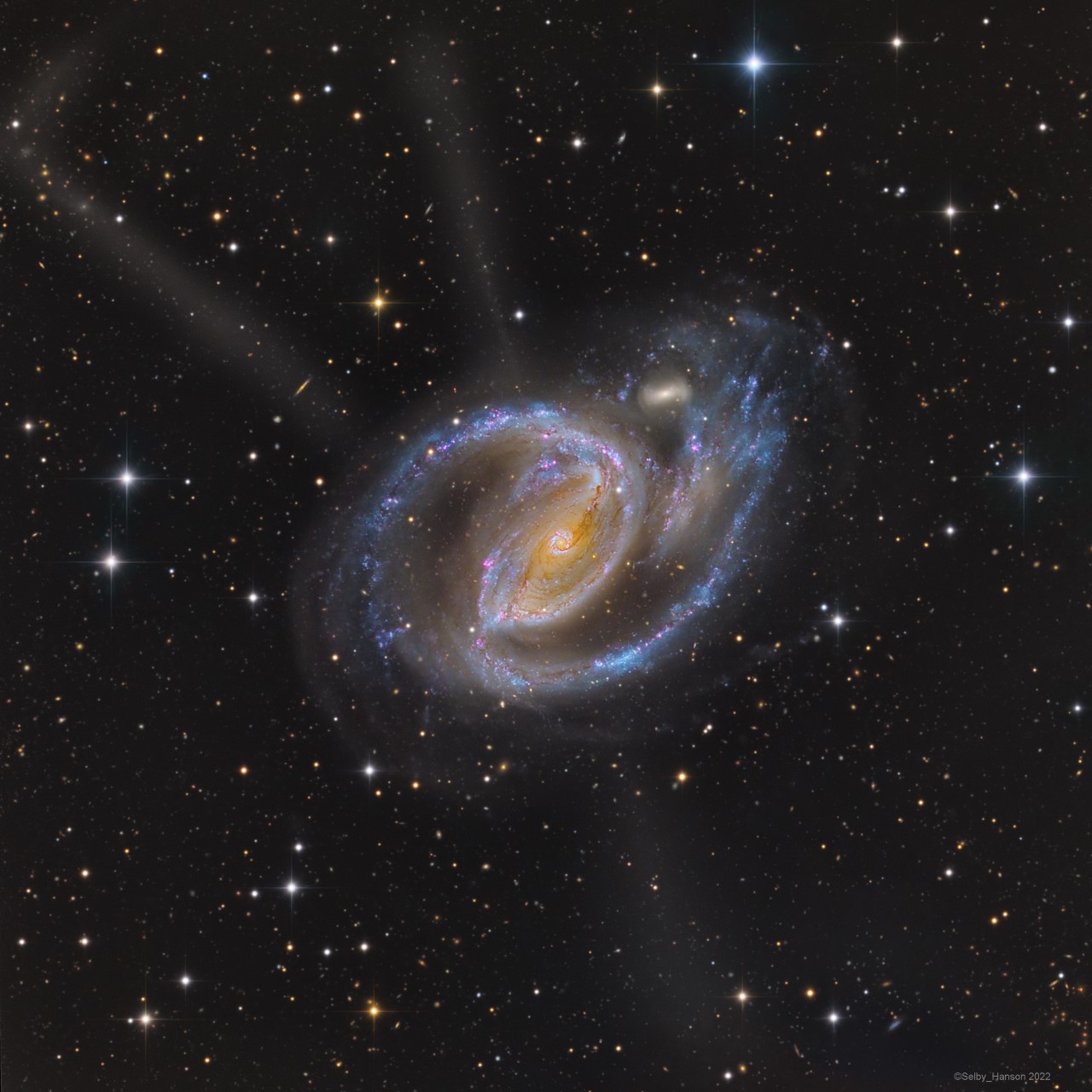NGC 1097: Spiral Galaxy with Supernova.
Image Data: Telescope Live (Chile); Image Processing & Copyright: Bernard Miller
Interesting! I like supernovas. As you could see from one of the links in the caption, SN 2023rve is a type II supernova, which means that it's a core-collapse supernova whose massive progenitor exploded when it had built up an iron core. The stars that end up as type II supernovas are massive stars that fuse and use up all their available fuel in their fight against gravity until they have created an inert iron core, after which their supernova demise is imminent.
Type II supernovas vary a lot when it comes to absolute luminosity. They are not like
type Ia supernovas, which are white dwarf stars that accrete mass until they explode when their cores exceed 1.4 solar masses. When supernovas type Ia explode, they literally "go up in smoke" and leave no remnant behind, since all of the mass they contain "is turned into energy". (I'm sure that's not exactly correct, Chris. Please do correct me.)
Type II supernovas are different, since they almost always leave a remnant behind, usually a neutron star. Sometimes they leave a black hole behind, but I don't think that we have witnessed an explosion where astronomers have been confident that the stellar core had turned into a black hole.
Type II supernovas don't have a typical luminosity, since they can explode at different masses and with different amounts of gas and dust surrounding the core. I think, however, that type Ia supernovas are often visually brighter than type II supernovas. Type Ia supernovas do have a "typical peak luminosity", which is magnitude −19.5. Type II supernovas are often not that visually bright. But they are often more powerful, since most of their energy is released as a tsunami of invisible neutrinos.
As for SN2023rve, its peak apparent magnitude was +14. The apparent magnitude of the entire galaxy itself, NGC 2097, is 9.5, according to my software. In astronomy, the lower the magnitude is, the brighter is the object.
I'd like to write a lot about NGC 1097 as well, but I have no time. So I'll stop now.
Ann
P.S. I really, really recommend
this gif where you can see the evolution of a type Ia supernova!

P.P.S. This is my post number 13000. If Art Neuendorffer had been here, he would have made a post about that in the
Thousand Post Club thread.
Art, I miss you.

 NGC 1097: Spiral Galaxy with Supernova
NGC 1097: Spiral Galaxy with Supernova










